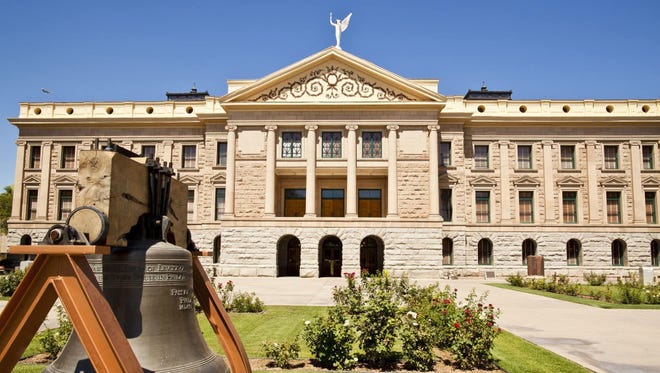The 2020 Democratic hopefuls will debate in a state that has voted for the winning presidential candidate every time since 1944, with one exception.

As the 2020 Democratic candidates descend Tuesday on Westerville, Ohio, a northern suburb of Columbus, for the fourth presidential debate, here are 12 fast facts about politics and the economy in the Buckeye State that could help shape the upcoming election.
The state is typically a reliable weather vane on election night: It has voted for the eventual presidential winner every time since 1944 except once, in 1960, when Ohioans chose Richard Nixon over John F. Kennedy. In 2004, Ohio provided the Electoral College votes that put President George W. Bush over the top.
In 2016, Donald Trump beat Hillary Clinton by a blowout eight points in Ohio — more than in Arizona, North Carolina and Georgia — leading many strategists to remove the state from the map of presidential battlegrounds. Ohio Democrats, however, are not yet willing to admit they live in a red state, pointing to last year’s midterm elections, where…
Senator Sherrod Brown, a Democrat, won 53.4 percent of the vote in 2018, running a campaign that emphasized working-class economic issues.
Democrats in 2018 flipped six seats in the statehouse from red to blue, including three in the Columbus suburbs, reflecting a national pendulum swing away from Mr. Trump by white college-educated independents and Republican women.
On the other hand, Republicans won every state constitutional office in 2018 from governor on down, in a year when Democrats captured top offices in other northern industrial states including Wisconsin, Michigan and Pennsylvania.
Mr. Trump’s approval rating in the state, now at 43 percent, is not much better than the national average of 42 percent and worse than in “safe” red states. A recent survey by Emerson Polling found that 54 percent of women in the state disapprove of Mr. Trump. Former Vice President Joseph R. Biden Jr. and Senators Elizabeth Warren and Bernie Sanders all outpolled Mr. Trump in head-to-head matchups. Forty-seven percent of Ohio voters support impeachment, the survey found.
The long-term decline of manufacturing, which fueled Mr. Trump’s victory in Ohio, has continued, but the state’s transition to a service economy has salved some wounds. General Motors, once Ohio’s largest employer, today ranks 72nd, while the Cleveland Clinic is No. 1, with Walmart close behind.
The idling of a G.M. factory near Youngstown, Ohio, this year cost thousands of jobs, years after Mr. Trump visited, promising that the jobs were “all coming back.” But the closure may not sour all the rank-and-file union autoworkers who voted for him. Some white working-class voters are determined “to go down with the ship with him,” a union official told The Times recently.
Although black voter turnout in Ohio declined by 7.5 points from 2012 to 2016, according to one analysis of voting data, that does not come close to accounting for Mrs. Clinton’s loss there. Instead, Mr. Trump won white voters in Ohio by a much larger margin than the 2012 Republican nominee, Mitt Romney.
The political bottom line: Democrats in Ohio, as elsewhere, are winning over suburbanites while losing white blue-collar voters in places like northeast Ohio. Many strategists consider it a long-term trade-off that will outlast the Trump era.
Westerville, with above average family income, education levels and home prices, is the home of former Gov. John Kasich, a Republican who ran in the 2016 presidential primary, but the community is trending blue. It voted for Mr. Romney in 2012 but Mrs. Clinton in 2016. There was a 29-point swing toward the Democrats between 2016 and 2018 in Senate and House races, according to an analysis by Cleveland.com.
Columbus, with an economy anchored by banking, insurance and higher education, fits the profile of a Sun Belt city plopped down in the Midwest: It is one of the 15 fastest growing metropolises in the country, and the only one on the list in the Midwest.
Columbus is home to The Ohio State University. Do not omit the article. And on Big Ten football game days, Michigan is pronounced “the state up north.”
Trip Gabriel is a national correspondent. He covered the past two presidential campaigns and has served as the Mid-Atlantic bureau chief and a national education reporter. He formerly edited the Styles sections. He joined The Times in 1994. @tripgabriel • Facebook
A version of this article appears in print on , Section A, Page 16 of the New York edition with the headline: 12 Things You Need To Know About Ohio. Order Reprints | Today’s Paper | Subscribe


